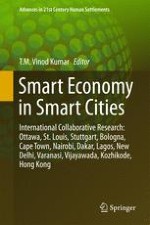2017 | OriginalPaper | Buchkapitel
30. Smart City Foundation—Driver of Smart Cities
verfasst von : Gora Mboup, Momar Diongue, Samba Ndiaye
Erschienen in: Smart Economy in Smart Cities
Verlag: Springer Singapore
Aktivieren Sie unsere intelligente Suche, um passende Fachinhalte oder Patente zu finden.
Wählen Sie Textabschnitte aus um mit Künstlicher Intelligenz passenden Patente zu finden. powered by
Markieren Sie Textabschnitte, um KI-gestützt weitere passende Inhalte zu finden. powered by
